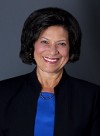Marilyn Singleton, MD, JD summarizes recent healthcare-related legislative activity on Capitol Hill.
It was a slow summer as our Congresspersons took their highly coveted 7-week vacation.
Even as premiums skyrocket and ACA co-ops fail, health care reform has been below the fold during much of this presidential campaign.
Thanks to Bill Clinton, the ACA is gaining the attention it deserves. The former president while shilling for his wife in Flint, Michigan, called Obamacare “the craziest thing in the world.” He said, “you’ve got this crazy system where all of a sudden 25 million more people have health care and then the people who are out there busting it, sometimes 60 hours a week, wind up with their premiums doubled and their coverage cut in half.”
He continued, “on the other hand, the current system works fine if you’re eligible for Medicaid, if you’re a lower-income working person; if you’re already on Medicare, or if you get enough subsidies on a modest income that you can afford your health care. . . But the people that are getting killed in this deal are small business people and individuals who make just a little too much to get any of these subsidies.”
For example, the largest approved premium hikes on individual market plans for 2017 are: (1) Tennessee, Blue Cross, Blue Shield, 62%; (2) Kentucky, Golden Rule Insurance Co., 47%; (3) Iowa, Wellmark, 42%; (4) Nebraska, Medica, 39%; (5) Maryland, CareFirst, Blue Cross, Blue Shield, 31%.
More Fixes to the ACA
The CO-OP Consumer Protection Act, H.R. 954 which was introduced by Rep. Adrian Smith (R-NE) in February 2016, passed the House on September 22nd. The legislation was in response to the fact that only 6 of the 23 ACA Co-ops have not failed. This bill temporarily exempts from penalties for failing to purchase and maintain minimum essential health care coverage (i.e., individual mandate penalty) individuals whose coverage under a plan offered by a qualified nonprofit health insurance issuer receiving funds through the Consumer Operated and Oriented Plan program was terminated or otherwise discontinued.
Full text: https://www.govtrack.us/congress/bills/114/hr954/text.
On September 13, 2016, H.R. 6019, the Relief from Obamacare Mandate Act of 2016 was introduced by Rep. Todd Young (R-IN) and referred to the House Ways and Means Committee. The bill would to provide an exemption to the individual mandate to maintain health coverage for certain individuals whose premium has increased by more than 10 percent.
Full text: https://www.govtrack.us/congress/bills/114/hr6019/text.
On September 14, 2016, S. 3322 was introduced by Sen. Jeff Flake (R-AZ) and referred to the Senate Finance Committee. The bill would modify the ACA’s hardship exemption to the individual mandate to maintain health coverage for certain individuals residing in service areas with no health insurance issuers offering plans on an Exchange.
Full text: https://www.govtrack.us/congress/bills/114/s3322/text.
On September 15, 2016, H.R. 6049, the Protection from Insurance Exchange Monopolies Act was introduced by Rep. Joseph Heck (R-NV) and referred to the House Ways and Means Committee. This bill amends the Internal Revenue Code to exempt from the requirement to maintain minimum essential health coverage any individual residing in a county with fewer than two health insurance issuers offering qualified health plans on an exchange.
Full text: https://www.govtrack.us/congress/bills/114/hr6049/text.
On September 19, 2016, H.R. 6067, the Relief from Obamacare Exchange Failures Act was introduced by Rep. Diane Black (R-TN) and referred to the House Ways and Means Committee. The bill would amend the Internal Revenue Code to provide an exemption from the individual mandate for certain individuals without access to Exchange coverage.
Full text: https://www.govtrack.us/congress/bills/114/hr6067/text.
On July 6, 2016, H.R. 1270, the Restoring Access to Medication Act of 2015 was passed in the House and was sent to the Senate for consideration. This bill repeals provisions of the Internal Revenue Code, added by the Patient Protection and Affordable Care Act, that limit payments for medications from health savings accounts, medical savings accounts, and health flexible spending arrangements to only prescription drugs or insulin (thus allowing distributions from such accounts for over-the-counter drugs).
Full text: https://www.govtrack.us/congress/bills/114/hr1270/text.
On May 25, 2016, H.R. 5324, Health Savings Account Expansion Act of 2016 was introduced by Rep. Dave Brat (R-VA) and referred to the House Ways and Means Committee. This bill amends the Internal Revenue Code to modify the requirements for health savings accounts (HSAs) to:
increase the maximum contribution amounts, permit the use of HSAs to pay health insurance premiums and direct primary care expenses, repeal the ACA’s restriction on using HSAs for over-the-counter medications, eliminate the requirement that a participant in an HSA be enrolled in a high deductible health care plan, and decrease the additional tax for HSA distributions not used for qualified medical expenses.
Full text (House): https://www.govtrack.us/congress/bills/114/hr5324/text.
Full text (identical Senate): https://www.govtrack.us/congress/bills/114/s2980/text.
On Sep 15, 2016 Senate Resolution 561, a resolution supporting efforts to increase competition and accountability in the health insurance marketplace, and to extend accessible, quality, affordable health coverage to every American through the choice of a public option, was introduced by Sen. Jeff Merkley (D-OR) and referred to the Senate Health, Education, Labor, and Pensions Committee.
This resolution expresses support for efforts to build on the ACA by adding the public option. The resolution posits that the public option would (1) lead to increased competition and reduced premiums; (2) cut wasteful spending on administration, marketing, and executive pay; and (3) ensure that consumers have the affordable choices they deserve; and (4) save taxpayers billions of dollars according to the Congressional Budget Office.
Full text: https://www.govtrack.us/congress/bills/114/sres561/text
Tax Relief for Consumers
On Jun 29, 2016, S. 3111, the Seniors Tax Hike Prevention Act of 2016 was introduced by Sen. Rob Portman (R-OH) and referred to the Senate Finance Committee. This bill amends the Internal Revenue Code to extend through 2018, the rule that permits individuals who are 65 and older to deduct certain medical expenses that exceed 7.5% of adjusted gross income. (Under current law, the rule that reduces the 10% threshold for the medical expense deduction to 7.5% if a taxpayer or a taxpayer’s spouse is 65 or older expires at the end of 2016.)
Full text: https://www.govtrack.us/congress/bills/114/s3111/text.
Support for Direct Pay Practices
On September 13, 2016, H.R. 6015, the Primary Care Enhancement Act was introduced by Rep. Erik Paulson (R-MN) and referred to the House Ways and Means Committee. (Identical bill in Senate, S 1989). This bill amends the Internal Revenue Code to: (1) permit an individual to pay primary care service arrangement costs from a health savings account; (2) allow an eligible taxpayer enrolled in a high-deductible health plan to take a tax deduction for cash paid into a health savings account, even if the taxpayer is simultaneously enrolled in a primary care service arrangement; and (3) for purposes of certain tax-deductible expenses for medical care, expand the definition of “medical care” to include periodic provider fees and pre-paid services. A “primary care service arrangement” is an exchange of ongoing primary care services for a fixed periodic fee which is not billed to any third party on a fee-for-service basis.
The bill also amends title XI of the Social Security Act to require the Center for Medicare and Medicaid Innovation (CMI) to test a primary care medical home model for payment and service delivery. Under this type of model, qualified direct primary care medical home practices are reimbursed a periodic fee for serving Medicare enrollees. In selecting qualified direct primary care medical home practices to participate, CMI shall give priority to practices seeking to enroll dual-eligible individuals.
Full text House version: https://www.govtrack.us/congress/bills/114/hr6015/text.
Full text Senate version: https://www.govtrack.us/congress/bills/114/s1989/text.
Pro-Physician Volunteer Legislation
On June 27, 2016, S. 3101, the Good Samaritan Health Professionals Act of 2016 was introduced by Sen. Bill Cassidy (R-LA) and referred to the Senate Health, Education, Labor, and Pensions Committee. This bill amends the Public Health Service Act to shield a health care professional from liability under federal or state law for harm caused by any act or omission if: (1) the professional is serving as a volunteer in response to a disaster; and (2) the act or omission occurs during the period of the disaster, in the professional’s capacity as a volunteer, and in a good faith belief that the individual being treated is in need of health care services.
This protection from liability does not apply if: (1) the harm was caused by an act or omission constituting willful or criminal misconduct, gross negligence, reckless misconduct, or a conscious flagrant indifference to the rights or safety of the individual harmed; or (2) the professional rendered the health care services under the influence of alcohol or an intoxicating drug.
Full text: https://www.govtrack.us/congress/bills/114/s3101/text
More Control Over Physicians as Part of the Opiate Wars
On July 13, 2016, S. 3209, the Prescription Drug Monitoring Act of 2016 was introduced by Sen. Amy Klobuchar (D-MN) and referred to the Senate Health, Education, Labor, and Pensions Committee. The bill would require the use of prescription drug monitoring programs and to facilitate information sharing among States.
Full text: https://www.govtrack.us/congress/bills/114/s3209/text.
Legalized Physician Assisted Suicide Is On the March
Attempting to join Washington, Oregon, Vermont, Montana, California, on October 4, 2016, a Washington, D.C. city council panel voted 3-2 to advance a bill allowing physician-assisted suicide. One of the dissenters said she feared low-income people who have less access to health care would be pushed to end their lives early. Another felt this should be done through a ballot initiative to give voters their say.
And Why Do We Need Laws to Mandate Administrative Common Sense
On September 22, 2016, H.R. 5320, the Social Security Must Avert Identity Loss (MAIL) Act of 2016 passed the House by 414-0. This bill directs the Social Security Administration to ensure that no document it sends by mail includes a complete Social Security account number unless necessary.
Full text: https://www.govtrack.us/congress/bills/114/hr5320/text.
On July 14, 2016, H.R. 5880 was introduced by Rep. Cedric Richmond (D-LA) and referred to the House Ways and Means Committee. This bill directs the Department of Health and Human Services to establish cost-effective procedures to ensure that a Social Security account number (or a derivative) is not displayed, coded, or embedded on Medicare cards. If you remember, 20 years ago HIPAA mandated that insurance cards would not have Social Security numbers, but Medicare could not figure out how to do it.
Full text: https://www.govtrack.us/congress/bills/114/hr5880/text.
On September 13, 2016, H.R. 6011, the ACA Premium Verification Act, was introduced by Rep. Gus Bilirakis (R-FL) and referred to the House Energy and Commerce and Ways and Means Committees. To require that the Centers for Medicare & Medicaid Services has in place adequate verification procedures to ensure that advance payments under the Patient Protection and Affordable Care Act are made for only enrollees under qualified health plans who have paid their premiums
Full text: https://www.govtrack.us/congress/bills/114/hr6011/text.



 Dr. Marilyn M. Singleton, MD, JD
Dr. Marilyn M. Singleton, MD, JD





